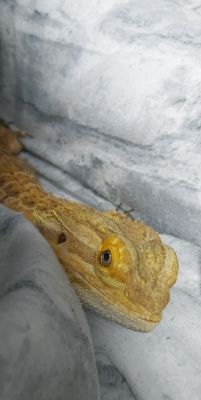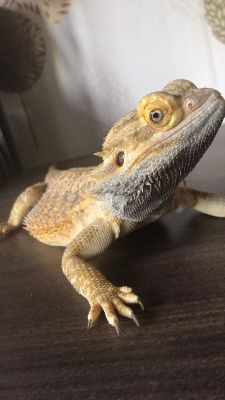Bearded dragons, which originally hail from the arid open woodland and scrubland of inland Australia, have gained popularity as pets in the UK since the early 1990s.
More Attention Than Other Pets
These friendly creatures can live for over a decade, making them a long-term commitment. However, they require a bit more attention than other pets, so here are our top tips for keeping your bearded dragon healthy and happy:
Provide a Temperature Controlled Environment
Bearded dragons require a habitat replicating their natural desert environment. This means a terrarium with full-spectrum UVB lighting, a basking spot at the correct temperature, and a cool area. The temperature gradient should range from 80 to 90°F during the day and 70 to 75°F at night. UVB lighting is essential for providing vitamin D3, which helps with calcium absorption.

Feed Them the Right Diet
Bearded dragons are omnivores and need plant-based and animal based foods. Offer a variety of insects, such as crickets, mealworms, superworms, and waxworms, as well as dark leafy greens, pumpkins, butternut squash, and calcium and vitamin supplements.
Handle Them Gently
Bearded dragons are fragile and can be easily injured if handled too roughly. Always support their body and use two hands when picking them up.
Give Them Plenty of Room
Bearded dragons are naturally territorial and need ample space to move around and explore. A 40-gallon terrarium is recommended for one dragon.
Provide Hiding Spots
Hiding places make your bearded dragon feel secure. Include items such as logs, rocks, and plants to give them places to hide and relax.

Provide Adequate Hydration
Bearded dragons should have fresh water in a shallow dish daily. Offer a bath a few times a week for additional hydration.
Introduce Them to People Gradually
Bearded dragons can be skittish around people, so it’s crucial to introduce them to people gradually.
Use Appropriate Substrate
Bearded dragons should be housed on a proper substrate, such as natural play sand, coconut coir, paper towels, or reptile carpet. Avoid wood shavings, gravel, or sandblasting sand, as they can cause impaction if ingested.
Offer Enrichment
Bearded dragons require enrichment items to keep them entertained and stimulated. Adults and children may enjoy having a Bearded dragon as a pet, but it’s essential to provide the necessary care and follow the rules outlined above to ensure their health and happiness. Enjoy your lizard!
For more pet articles, click here.


